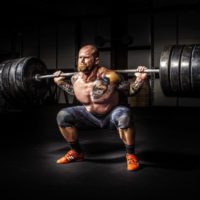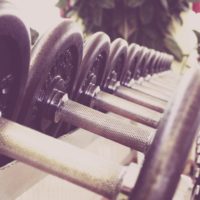The Ideal Muscular Body, Part 1: Structure and Form
What are the ideal characteristics of a bodybuilder’s body?
People go into bodybuilding for different reasons. Some engage in weightlifting exercises to lose weight and build muscle mass to improve their looks.
Others engage in bodybuilding to strengthen weak muscles and joints, as in the case of older males who are suffering from a lifetime of sedentary living. And still some engage in the sport because they want to compete in amateur and/or professional bodybuilding competitions.
If you’re interested in competing or if you’re simply interested in what the industry considers the sterling characteristics of a strong and ideal bodybuilder, you’re in luck!
Our current series will cover all of the essential traits that you can try to develop as you proceed with your bodybuilding journey.
Note that many of these traits were derived from classical bodybuilders like Arnold Schwarzenegger who were able to develop their fantastic physiques without the information and pharmacological edge that young bodybuilders have now.
What are these traits?
1. General Physical Structure
Classical bodybuilding champions the gradual development of the “X-frame”. The “X-frame” can be observed quite easily during professional bodybuilding competitions.
Contestants have very wide shoulders, large guns, tapered muscular waists and flaring hips. The narrowest point in the “X-frame” is always the waistline.
Though the waistline is narrow, the abdominal area is consistently built and this region leads to a wide and massive chest supporting equally large shoulders.
The lower region of the body builder is defined by massive, well-defined hips and quads that are as wide and solidly built as the chest and shoulders. A single double bicep pose should be able to show the “X-frame” in a well-built bodybuilder.
2. Muscular Dimension and Form
Obviously, a professional bodybuilder will be evaluated and judged based on the aesthetic merits of his physique. Like a sculpture, a professional bodybuilder will be examined closely by the judges. It’s never enough to simply have big muscles.
Mr. Olympia winners often have large muscles with high crests. A double bicep post should show biceps that easily “peek out” from the rest of the arm. The core muscles or the “six pack” should be symmetrical and there should be as little distance as possible between the two columns of abdominal muscle.
The lat muscles on the other hand should be positioned low with heavy build. The wideness of the lat muscles will also be noted. Contrary to common belief, your triceps shouldn’t be rounded and wide. They should actually be narrow and more tapered, indicating muscle splitting and excellent development.
The ideal shoulder can be quite difficult to attain. Amateur bodybuilders often have a tough time measuring up to their professional counterparts because it’s difficult to develop the shoulders to the point that it becomes a “three-headed” shoulder with all regions emerging easily during a flex.
Professional bodybuilders typically press 200+ pounds to bring out the extended musculature of the shoulders. It’s not an easy task, but if you have what it takes to lift 200+ pounds later in your journey, you should be able to achieve the “three-headed” shoulder form.
What about the legs?
Legwork is grueling for professional bodybuilders because they all aim to produce extreme muscular prominence in their hips and calves. If you’ve tried a heavy day on your legs, you know how painful it can be during the first few months.
Human legs are designed for walking, climbing and running. Anything beyond these three activities requires major re-engineering from within… But the results are often fantastic and worth your time!
3. Muscle-Joint Ratio and Form
In a previous blog post we talked about the relationship between bone size and muscle size. If you have big bones, it would also be easier for you to develop large muscles. However, this genetic reality does not actually conform to the ideal appearance of joints in competition.
What judges are often looking for is large muscles held together by narrow-looking joints. So if you have large joints to begin with, you will have to exert extra effort to ensure that your muscles look larger compared to your joint size.
Of course, shorter competitors would also have to work hard to ensure that they have a good muscle-joint ratio. However, the struggle is less strenuous because their joint sizes are smaller than their taller counterparts.
The obvious problem areas for many competitors are the shoulders, arms and legs. There is no shortcut: you have to ensure that the muscles wrapped around these joints are worked out thoroughly to gain sufficient size to dwarf the supporting joints.



